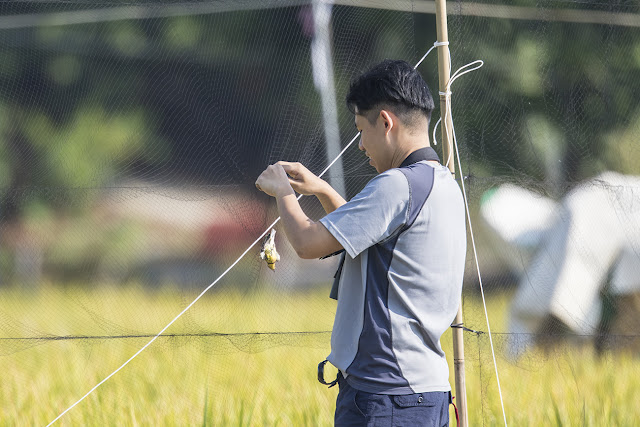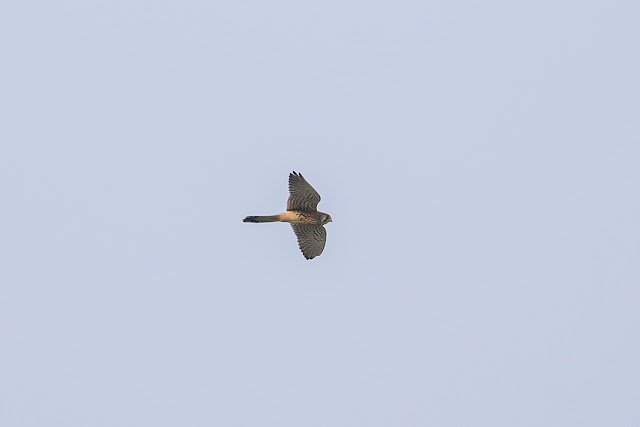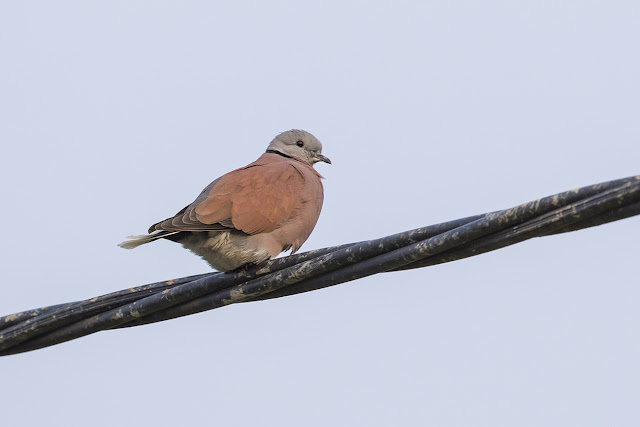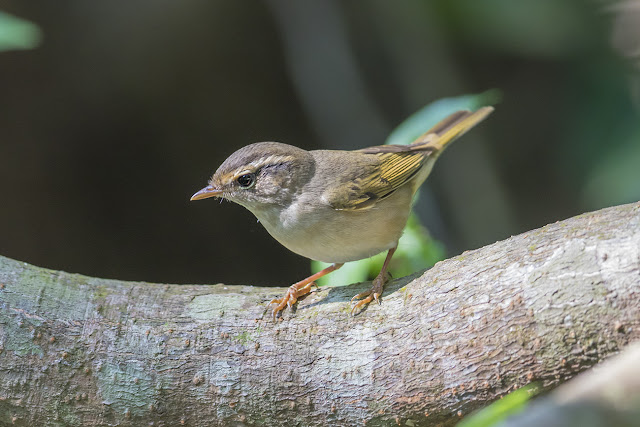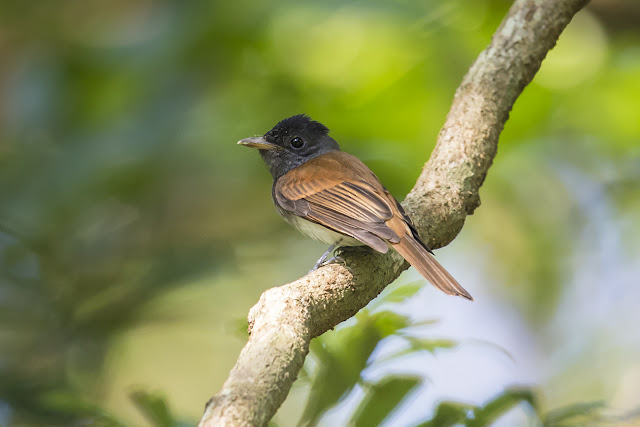Speckled Piculet - star bird of the morning
The area known as Pat Heung which includes one of my favourite birding spot Shek Kong Catchment actually includes a wide range of habitat, from forested areas on the northern slope of Tai Mo Shan, scrubland further down before you get to some agricultural land along the base of the mountain, further away you have Shek Kong Airfield Road which includes some open woods and grass, while Kam Tin there are some fishponds as well as Kam Tin River which holds a fair amount of water birds. So, it is a pretty good area for birds.
That morning I once again decided to visit Shek Kong Catchment for the first time in October. I actually got there pretty late, I didn't actually start walking until well past 8am. Around the public toilet I flushed a large bird which I suspected to be a Crested Serpent Eagle, I followed it's direction and managed to relocate the bird perched at eye-levels! I've had quite a lot of luck with them perched lately, I am certainly not complaining.
Crested Serpent Eagle
Things seemed pretty quiet, there weren't that many bird waves around, and even when there were it didn't contain much. A few Scarlet Minivets as well as Black-winged Cuckooshrike were pretty much all the action I got. Lesser Shortwings were singing constantly although none showed.
Scarlet Minivet
Black-winged Cuckooshrike
I bumped into John Clough, THE birder of Shek Kong Catchment, he lives nearby so naturally this is his local patch. We were just in time and saw a Ashy Drongo, the darker race hopwoodi is the least common subspecies in Hong Kong, they also look very different to the other two lighter race. I decided to tag along with John and he suggested we walk down to the agricultural land where he had seen some buntings, so I followed. I never been in that area so it's quite an eye-opener, although we didn't manage too many species down there except a few Black-faced Buntings, Richard's Pipits and Siberian Stonechats etc. We also managed a Pale-legged Leaf Warbler and Asian Brown Flycatcher along the more wooded area. John led me through the village of Lin Fa Tei and told me to walk back up the stairs towards the catchment to complete a loop, while he walked back home.
Ashy Drongo - hopwoodi
Asian Brown Flycatcher
It was already near noon when I got back up to the catchment, I picked up a few Fire-breasted Flowerpeckers, the male showed well although staying quite high up, the female came much lower down. They are mainly winter visitors to Hong Kong, although we do have some that over summer. Further along I spotted another Ashy Drongo, this time a leucogenis, being much paler and having a very white face.
Fire-breasted Flowerpecker - male (above) & female (below)
Ashy Drongo - leucogenis
As I was walking past the eco garden, I heard the high pitched 'sit-sit-sit-sit-sit' call of the Speckled Piculet, I quickly scanned the surrounding trees, finally found the tiny bird feeding very high up above my head. I waited around and the bird decided to come down and gave better views, as it busily pecked at the branches. John Clough had seen the Piculet at Shek Kong Catchment on a regular basis, this was however the first time I've ever seen them here. Although they are increasing in the last few years, they are still not what you call common, and I am happy to get some decent photos at last.
Speckled Piculet
After the Piculet I headed towards Ko Po Road by Kam Tin River, hopefully to take some photos of the Grey-headed Lapwings. I was not disappointed, as I saw a few at the usual roosting site along with a flock of Black-winged Stilts. Along the road I spotted a Chinese Skink, a fairly common skink species in Hong Kong, although a lot of the time they are so quick that I never had much chance to get a photo, this one was a little more cooperative and stayed long enough for me to get a decent photo. A little over 60 species of birds one morning in such a compact area is not bad.
Grey-headed Lapwing
Chinese Skink














